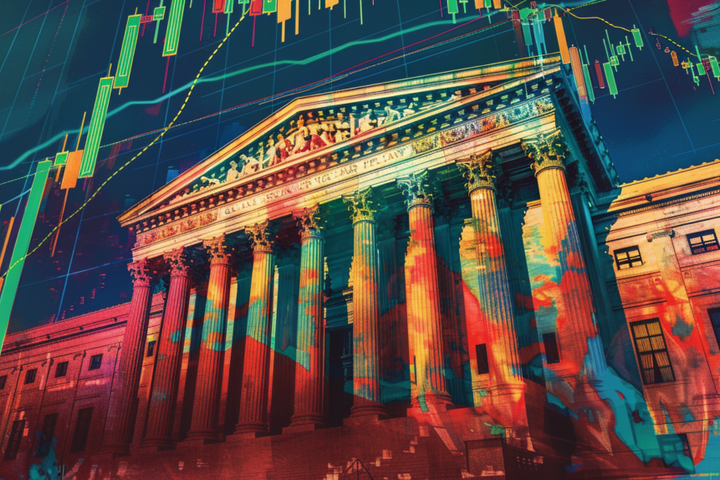
Global fund managers are holding the lowest cash levels in nearly two decades while crowding into stocks and commodities, a positioning shift that Bank of America says could leave markets dangerously exposed if the Federal Reserve does not cut rates in December.
That risk is suddenly gaining momentum as a run of hawkish Fed remarks has shifted market pricing for the next meeting.
Traders now see a 51% chance the Fed stays at 3.75%-4.00% on Dec. 10, according to the CME FedWatch tool. Last week, markets priced a 66% chance of a 25-basis-point cut.
Investors Are All-In. That's Usually A Warning
The November Bank of America Global Fund Manager Survey shows average cash levels fell to 3.7% from 3.8%, the lowest since early 2022 and below the 4% threshold that historically triggers a "sell" signal.
Bank of America said cash at 3.7% or lower has occurred 20 times since 2002 and "on every occasion stocks fell and Treasuries outperformed in the following 1-3 months."
The firm's broad sentiment indicator jumped to 6.4 from 5.7, the highest reading since February. Positioning is now a headwind rather than a tailwind for risk assets.
Net 34% of respondents remain overweight equities. That's below the 60% range historically seen at major market tops, which suggests positioning is bullish but not euphoric.
Soft Landing Hopes Dominate, But So Do Bubble Fears
A soft landing remains the base case. The survey shows 53% expect lower inflation and stronger growth over the next year. Just 6% expect a hard landing.
Yet 45% of respondents call an AI equity bubble the biggest "tail risk." More than half say artificial intelligence stocks are already in bubble territory.
At the same time, 53% of investors believe AI is already lifting productivity. That is the highest share in three months.
For the first time in 20 years, a net 20% say companies are "overinvesting," driven by hyperscale AI capital expenditure.
Read Also: Magnificent Seven Will Become Low-Profit Tech Utilities, Analyst Warns
Most Crowded Trade? Same As Always
"Long Magnificent 7" — the trade built around megacap tech stocks including NVIDIA Corp. (NASDAQ:NVDA), Microsoft Corp. (NYSE:MSFT), Apple Inc. (NASDAQ:AAPL), Alphabet Inc. (NASDAQ:GOOG) (NASDAQ:GOOGL), Amazon Inc. (NASDAQ:AMZN), Meta Platforms Inc. (NASDAQ:META) and Tesla, Inc. (NASDAQ:TSLA) — is once again the market's most crowded bet, cited by 54% of managers.
Second place goes to "long gold" at 28%.
Private credit emerges as the top source of a future credit event at 59%, the highest conviction since the question was introduced in 2022.
Where They're Positioned, And Where They're Not
Managers turned most overweight on healthcare, emerging markets and banks. Banks are now 36% overweight, the highest allocation since December 2024.
Commodities are also in favor. A net 17% overweight marks the highest since September 2022.
On the other side, allocations to UK equities dropped by 27 percentage points over three months, the biggest decline since October 2022. Consumer discretionary saw the steepest monthly cut on record, down 16 points.
Managers are 29% underweight UK stocks and 28% underweight energy.
What They Expect For 2026
Asset class of the year? 42% say international equities. Just 22% pick U.S. stocks.
Best performing index? 37% say MSCI Emerging Markets. Only 6% expect the S&P 500 to lead.
Currencies? 30% bet on the Japanese yen. Only 3% pick the British pound.
Gold? 34% expect prices between $4000 and $4500 per ounce by year-end 2026.
Equities? 43% see the S&P 500 ending 2026 between 7000 and 7500. Only 1% see it above 8500.
Ten-year yields? 45% expect 4%-4.5% at year-end 2026.
What Could Break The Bull Case?
The most bearish scenario for 2026 is inflation and renewed Fed rate hikes, cited by 45% of respondents. AI capital spending hitting a wall ranks second at 26%.
Meanwhile, 62% still describe the next 12 months as "stagflation" — below-trend growth and above-trend inflation.
With cash at a two-year low and everyone counting on a soft landing and Fed rate cuts, the risk is simple: what if the central bank refrains from cutting further?
Bank of America's chief investment strategist Michael Hartnett described the current investor crowd as "capex rich, cash poor, and rate-cut needy" — a mix that has often preceded painful reversals.
Read Next:
Image created using artificial intelligence via Midjourney.







